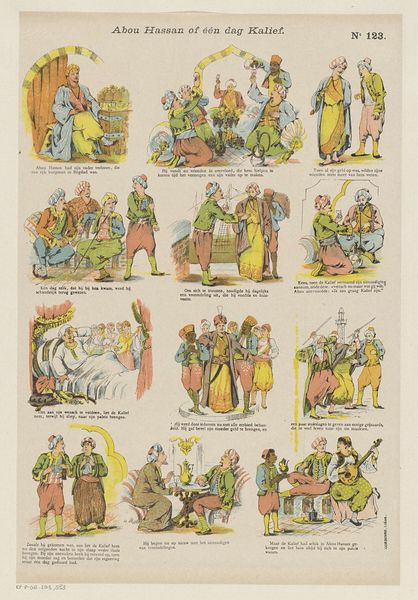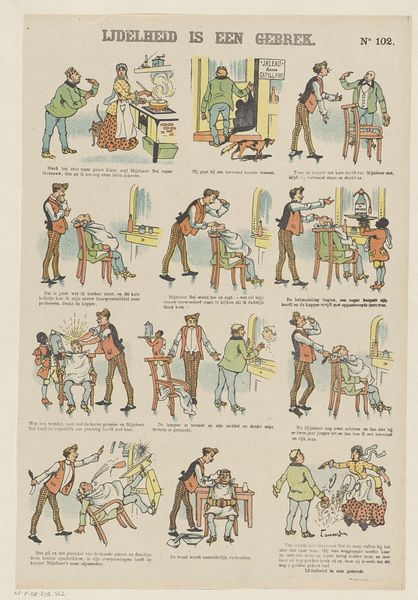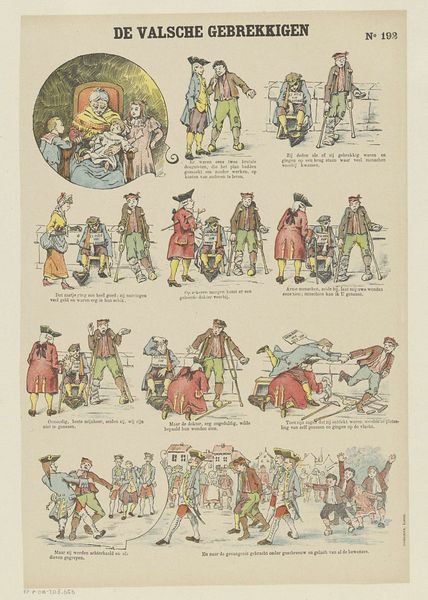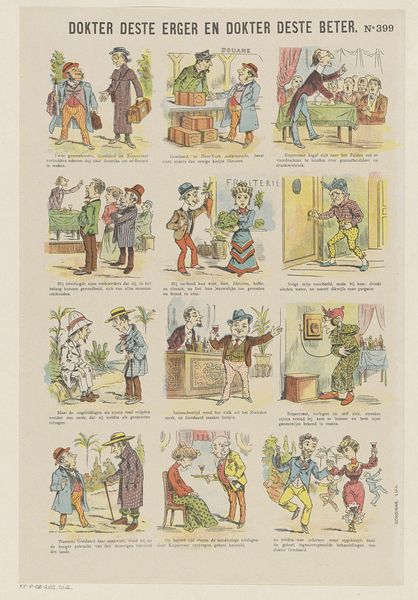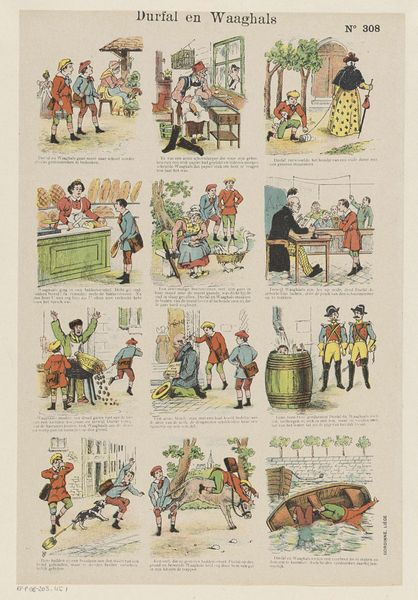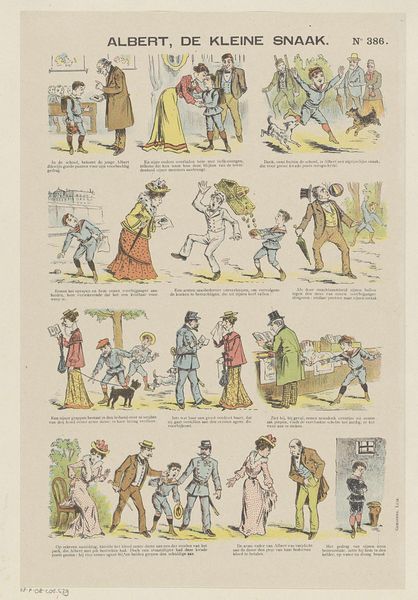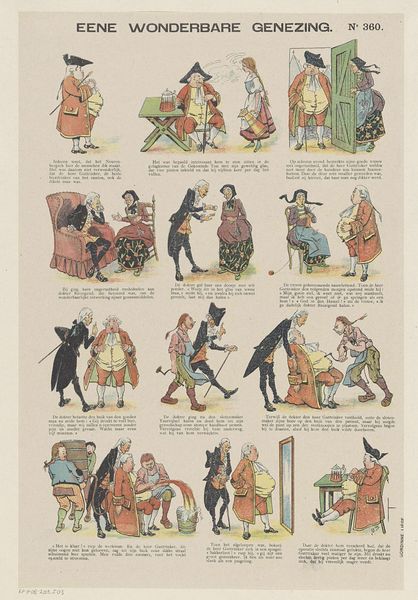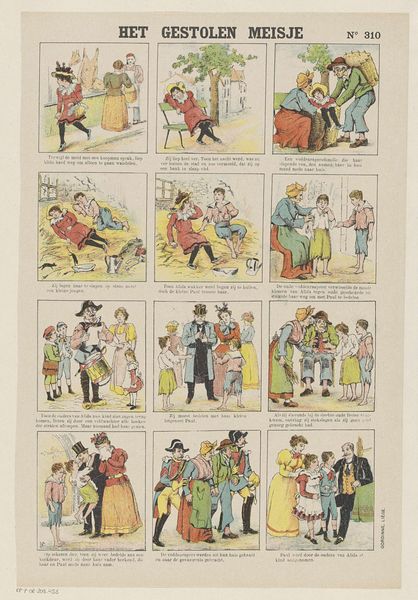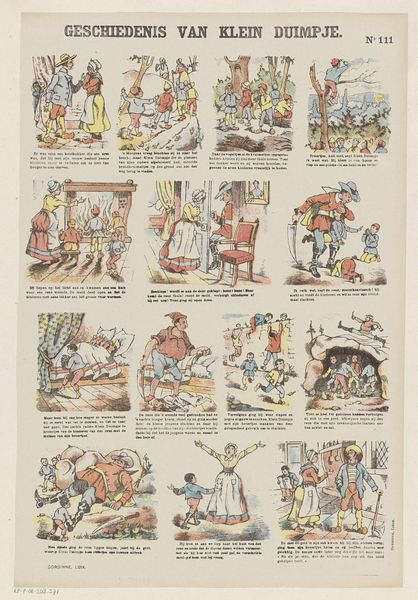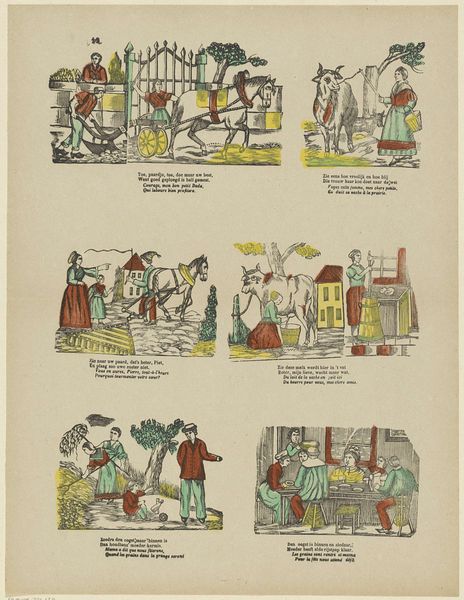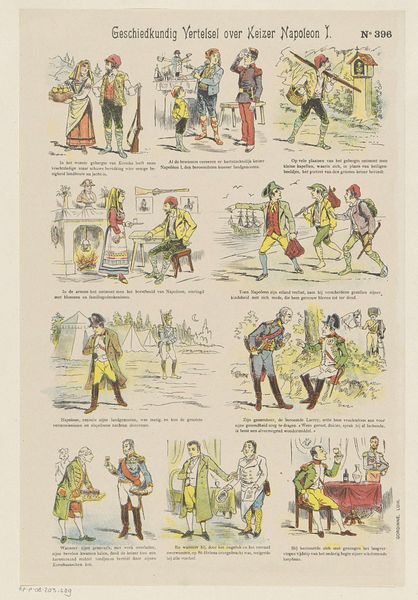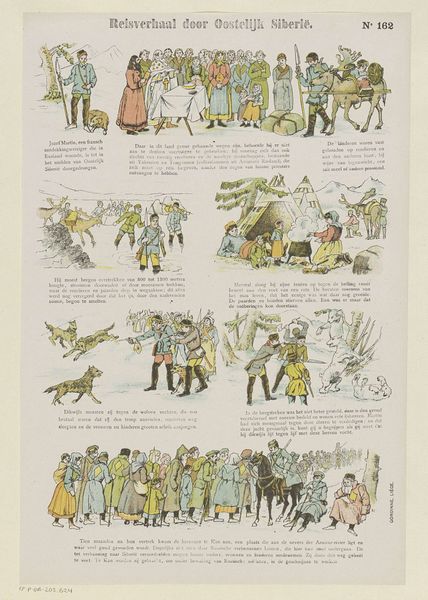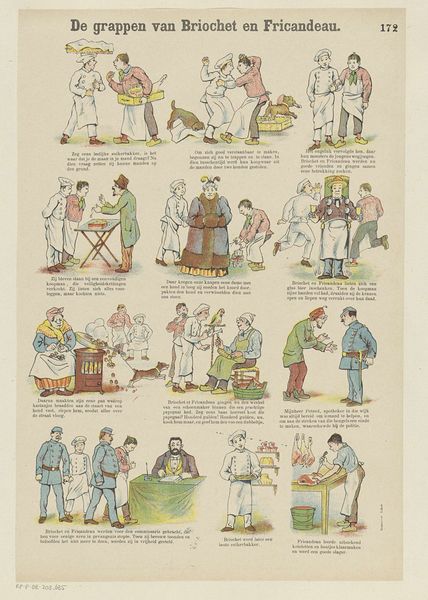
#
narrative-art
# print
#
folk-art
#
comic
#
watercolour illustration
#
genre-painting
Dimensions: height 399 mm, width 272 mm
Copyright: Rijks Museum: Open Domain
Curator: So, what are your first thoughts on "De geschiedenis van Polichinelle," dating from 1894-1959? It’s currently held at the Rijksmuseum. Editor: It reminds me of an old comic strip, almost like a very condensed graphic novel. It’s a print, so the colours are muted, and the scenes depicting what seems like the life of this Punch character feel very episodic and fast-paced. What stands out to you? Curator: I see this work as a reflection on societal control and the figure of the clown or fool as a site of resistance. The Polichinelle character, originating from commedia dell'arte, has historically been a figure of satire, often used to critique authority. The choice to represent the character's entire history raises questions about destiny versus free will. Do you think the narrative presents Polichinelle as a victim or an agent? Editor: That's interesting. I hadn't thought about the aspect of resistance. It does seem like he is both shaped by and pushes back against his circumstances. I suppose it is more about societal commentary than just telling the story of one man. Curator: Exactly. The sequential format itself hints at systems – the rigid structure echoing the societal structures Polichinelle, the perpetual outsider, might be challenging. His journey is both personal and inherently political, mirroring class struggle. Editor: That’s made me reconsider how I see this work. It is both playful and critical. Is it folk art or more genre-painting? Curator: That's the beauty of art. Categories blur and overlap, forcing us to consider multiple layers of meaning. What do you think now? Editor: I now have a deeper understanding and a much more nuanced appreciation for it!
Comments
No comments
Be the first to comment and join the conversation on the ultimate creative platform.
